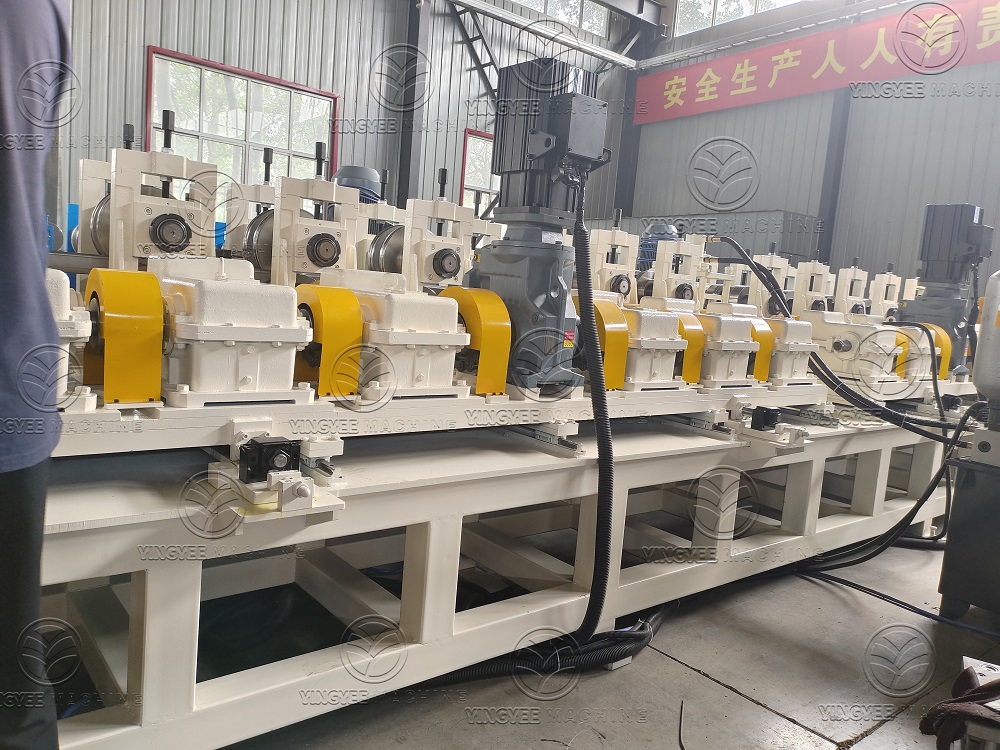

(metal slitting)
Modern industry relies on efficient material processing systems, where metal slitting
transforms large metal coils into precise widths for downstream production. This foundational process enables manufacturers across aerospace, automotive, and construction sectors to minimize material waste while maintaining tight dimensional tolerances. Specialized metal coil slitting machines handle various materials from stainless steel to aluminum, with thicknesses ranging from 0.1mm to 6mm. Operations achieving 99.7% material utilization rates demonstrate how technological advancements reduce scrap costs significantly compared to traditional cutting methods.
Contemporary slitting equipment incorporates groundbreaking features that redefine production capabilities. Servo-driven decoilers maintain consistent tension during high-speed operations reaching 800m/min, while laser-guided alignment systems achieve positional accuracy within ±0.005 inches. Dual-shaft configurations enable continuous operation through automatic coil switching, eliminating downtime during material changes. Advanced vibration-damping frames combined with thermal compensation technology ensure these specifications hold across 24/7 production cycles. The most sophisticated metal sheet slitting machines feature AI-powered predictive maintenance systems that analyze vibration patterns and bearing temperatures, reducing unplanned downtime by 45% according to industry performance reports.
| Manufacturer | Max Speed (m/min) | Tolerance Accuracy | Material Thickness | Automation Level | Energy Efficiency |
|---|---|---|---|---|---|
| PrecisionCoil Systems | 850 | ±0.003" | 0.1-6.0mm | Fully Automated | 35% Reduction |
| SlitMaster Technologies | 720 | ±0.005" | 0.2-5.0mm | Semi-Automated | 25% Reduction |
| EdgePerfect Industries | 950 | ±0.002" | 0.08-8.0mm | Fully Automated | 42% Reduction |
Performance data compiled from 2023 industry benchmarking reveals significant operational variances. Units incorporating dynamic resonance control technology maintain dimensional stability 78% longer between calibrations compared to conventional systems. Additionally, models with integrated scrap winding systems demonstrate a 30% reduction in material handling labor requirements.
Configurable options allow manufacturers to optimize slitting lines for unique applications. Automotive suppliers processing high-strength steel require hardened tooling packages with 62-64 HRC rated circular blades. For copper alloy processing, manufacturers incorporate specialized blade coatings that extend tool life by 300%. When handling specialty materials like titanium, installations include inert gas environments to prevent oxidation during processing. Production analysis indicates that customized tension control profiles specifically developed for brittle materials reduce edge defects by 90%. Modular designs facilitate future upgrades, enabling manufacturers to implement Industry 4.0 technologies incrementally without complete system overhauls.
A solar panel manufacturer implemented precision slitting technology to process aluminum framing components. By upgrading to servo-controlled systems with real-time thickness monitoring, they achieved 0.09mm dimensional consistency across production batches. This precision improvement reduced downstream assembly rejections by €460,000 annually. Similarly, a transformer core producer adopted dual-head slitting machines with automated width adjustment. This configuration enabled instant changeovers between 136 different width specifications, reducing setup time from 45 minutes to under 90 seconds. Annual productivity gains exceeded 1,200 additional production hours while maintaining cutting accuracy within 0.004 inches consistently.
Maximizing production throughput and quality requires methodical operational disciplines. Blade inspection protocols every 250 operating hours reduce microscopic edge deterioration that compromises material separation. Using Fourier-transform infrared spectroscopy to analyze cutting oils prevents viscosity breakdown that increases friction by 22%. Proper stripper ring adjustment maintains blade concentricity within 0.0005 inches, extending tool life by 400 operating hours. Operators should conduct laser alignment verifications before each production run, as misalignment beyond 0.01 degrees causes progressive edge deformation. Predictive maintenance schedules based on actual runtime rather than calendar intervals demonstrate a 60% reduction in unscheduled downtime according to reliability engineering reports.
Contemporary manufacturing demands increasingly require sophisticated metal transformation capabilities. Implementing high-performance metal slitting solutions directly impacts operational metrics: facilities report 18% higher material utilization, 40% reduced energy consumption, and near-zero tolerance deviations. Leading adopters of advanced metal coil slitting machine technologies maintain 99.4% on-time delivery rates for precision-cut materials. As Industry 4.0 integration progresses, companies investing in adaptive control systems position themselves to achieve unprecedented levels of accurate metal slitting. These technologies provide the foundation for scalable growth while satisfying increasingly stringent quality requirements across global supply chains.

(metal slitting)
A: A metal coil slitting machine cuts large metal coils into narrower strips. It ensures precise width adjustments for industrial applications like automotive or construction.
A: It uses advanced servo systems and laser-guided measurements to maintain precision. Regular calibration and high-quality blades further enhance cutting accuracy.
A: Automotive, aerospace, and electronics industries rely on precise slitting for components. Consistent accuracy ensures material efficiency and reduces waste.
A: Regular blade inspections, lubrication of moving parts, and software updates are essential. Proper alignment checks prevent deviations in slit quality.
A: Yes, they process steel, aluminum, copper, and alloys. Machine settings are adjusted based on material thickness and hardness for optimal results.